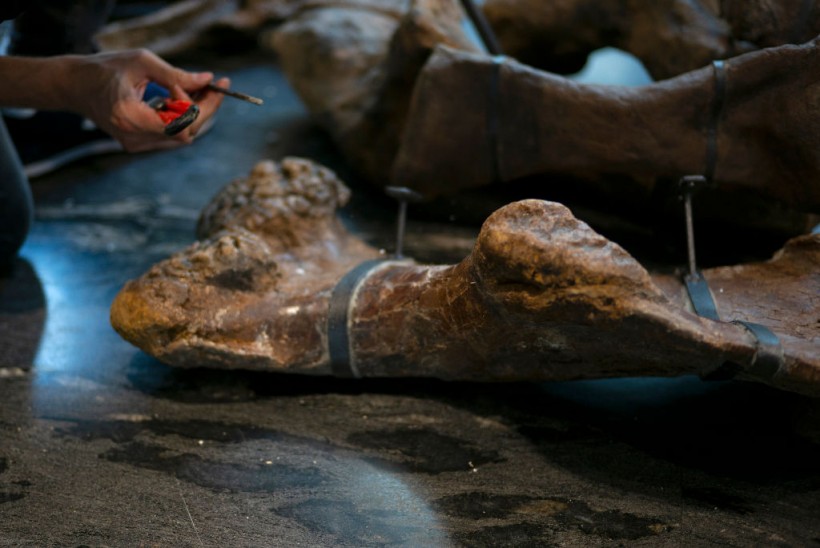(Photo : Photo by Aurelien Meunier/Getty Images)
The Bisticeratops froeseorum, which is highly considered as a newfound genus of horned dinosaur, has only been recently unearthed in New Mexico.
New Dinosaur Species
The particular species was found in Upper Cretaceous strata of New Mexico's San Juan Basin in the year of 1975, which was the first occurrence. Just after scientists discovered a skeleton protruding out of the dirt, that appears to be whereas almost intact and linked to the whole cranium.
Following years and years of sanitation as well as examination at the New Mexico Museum of Natural History, the skull was identified as belonging to a previously undiscovered genus.
According to Dr. Steven Jasinski, a senior lecturer at Harrisburg University of Science and Technology, in an initial comment which was future by both local and international new media around the world such as Newsweek media, future research analysis in to the fossils existing in gallery archives, along with fresh sample collecting and inquiry, would help researchers and experts alike to comprehend these dinosaurs to a significantly larger extent.
More so, Bisticeratops froeseorum was considered to have lived roughly 74 hundred and hundred thousand years ago, during the Cretaceous time in history, which was brought to an end by the meteorite that annihilated the bulk of the dinosaurs.
The native strain is a relative of the ceratopsid dinosaurs, which include the triceratops. Enormous antlers, mandibles, as well as a broad shelf-like head distinguish these enormous, four-legged plant - eating dinosaurs.
Tyrannosaurus rex and other tyrannosaurids mostly preyed on the magnificent creatures. This view is backed up by information discovered on the Bisticeratops' head.
Numerous deep gouges were found on different regions of the head, which included the upper teeth, cheek, and frills, and therefore are likely to have come from produced by a tyrannosaurid owing to their position as well as their scale, the BKSFE reported.
It still remains unknown whether the carnivore hunted down and murdered the Bisticeratops or discovered the dinosaurs have been previously a rotting corpse. Their massive antlers are supposed to have acted as both a defensive measure from attackers as well as a reproductive feature utilized for exhibition and partner selection.
Also read: Animal Brains: Which has the Biggest One Relative to Its Body?
Triceratops in New Mexico
Based on the experts at Harrisburg University, Bisticeratops might have been 16-20 feet tall, and weighted somewhere around 2.5 and 4 tons, and flourished roughly 8 million years well before the Triceratops relatives.
The findings add to the genealogy of dinosaur development, giving researchers a greater understanding of how environments interacted hundreds of million years ago.
Although merely the head of Bisticeratops was found, as noted by Jasinski in a release, this specimen provides scientists a significant amount of knowledge regarding horned dinosaurs in a period and location that was particularly special.
While some other ceratopsids are recognized from old aged strata in this geographical area, Bisticeratops may show experts the succeeding move in the progression of these horned dinosaurs in this geographical area as well as populates in some kind of a disparity designed to lead to the ultimate ceratopsid dinosaurs in this province prior to their actual extinction at the end-Cretaceous global catastrophe, as per 6park News.
Related article: Climate Change 252 Million Years Ago Could Have Helped Reptiles Rise to Dominance
© 2024 NatureWorldNews.com All rights reserved. Do not reproduce without permission.


![Tsunami Hazard Zones: New US Map Shows Places at Risk of Flooding and Tsunamis Amid Rising Sea Levels [NOAA]](https://1471793142.rsc.cdn77.org/data/thumbs/full/70325/280/157/50/40/tsunami-hazard-zones-new-us-map-shows-places-at-risk-of-flooding-and-tsunamis-amid-rising-sea-levels-noaa.jpg)



